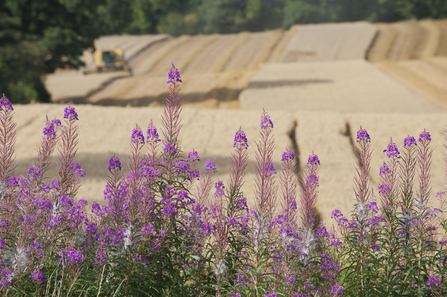Critical decisions await: Recap of Dubai COP28
We know food and farming matters for the nature outcomes we need. Globally, it uses 38% of land1, extracts 70% of freshwater and drives 80% of deforestation. Food production is also responsible for a third of global emissions, whilst farming practices and crop success is also impacted by climate change.
Whilst there was no question that the number one priority at COP28 was to secure a phase out of fossil fuel and to deliver a fair future for all through renewable energy production and decarbonisation, we know that climate change cannot be tackled without changing how we use land for food and other needs.
Reducing emissions so that we don’t reach more than 1.5 degrees temperature rise matters for society and nature – as well as food production – so did the important discussions tackle fossil fuels, and in turn the much-needed transformations in land use?
In short, whilst talks were extended and an agreement was reached around fossil fuels, the final text is still too weak, referring to fossil fuel transition rather than phase out, with little progress made on finance to help developing countries move away from fossil fuels and for climate adaptation.
And on food? Well, there was lots of talk, some announcements and many reports… but then essentially the food can was kicked down the road to future talks and summits.
The good news is that food and farming did feature in and around the summit:
One valuable outcome was the Declaration signed by 159 countries, including the UK, launched near the beginning of this climate summit, putting food was on the agenda. This is hugely useful and sends a powerful signal. But it lacked strong targets and clear steps. Nor was it an official UN COP outcome.
This pithily titled Dubai Declaration on Sustainable Agriculture Resilient Food Systems and Climate Action talks about:
-
adopting farming and food resilience and adaptation measures that will deliver sustainable food security whilst conserving, protecting and restoring nature
-
tackling inequality and ensuring food for vulnerable communities and supporting workers
-
protecting water systems, biodiversity and reducing the harmful effects on the food system (from greenhouse gases to water, soil and ecosystem harms)
-
integrating food into the climate change commitments and plans by 2025.
There were also numerous reports launched including a much heralded and hugely detailed UN Food and Agriculture Organisation (FAO) roadmap, which is partially useful as it suggested targets for cutting food related impacts by 25% and halving methane emissions by 2045. It refers to the need for healthy and environmentally better diets within the 10 areas for action (see FAO Roadmap for the 10 areas).
BUT (and it’s a big but) the FAO focus heavily on technofixes, such as increasing productivity for crops and livestock (which rings alarm bells in terms of inputs and soils), and Bioenergy with Carbon Capture and Storage (BECCS) (with potentially significant impacts on nature among other issues) and does not yet get us to net zero. Nor does it adequately lay out how adaptation will be achieved and how it can be through nature-based solutions on land. Also we’ve known many of these solutions for decades and it's not, as with most outcomes here, a legally binding commitment.


